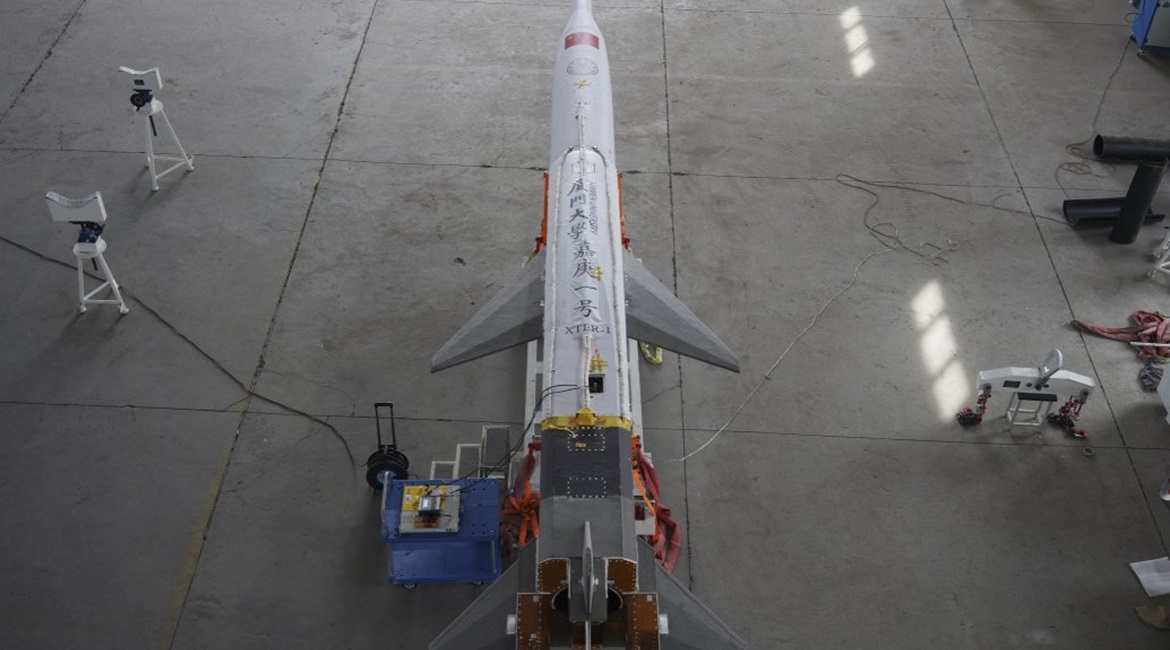
Chinese scientists have developed a new heat-resistant material for hypersonic aircraft that can endure more than 3,000°C from heating caused by its passage through the atmosphere at speeds between Mach 5 and Mach 20, state-owned newspaper Global Times reported on 28 April.

China test-launched the Jiageng-I hypersonic test vehicle on 23 April. It is, however, unclear whether it is fitted with the recently developed heat-resistant material. (Xiamen University)
Fan Jinglian, the lead scientist in the project, was quoted by the paper as saying that the new material “outperforms all similar foreign-made ones with its high melting point, low density, and high malleability”.
The material, which is reportedly a composite of ceramics and refractory metals, “enables a hypersonic aircraft to fly at Mach 5–20 within the atmosphere for several hours, as the high heat resulting from the friction between the aircraft and the air reaches between 2,000°C to 3,000°C: a temperature normal metal would not be able to endure”, stated the report.
“The combination of ceramics and refractory metals makes the material far more efficient than foreign-made ones, and this technology is world-leading,” Fan, who is a professor at the Central South University in Changsha, Hunan Province, was quoted as saying.
The scientist likened her composite to concrete cobble. “Think of the ceramics as the cobblestones, or the pellets, and the refractory metals are like the concrete. In high temperatures, the ceramics will act as pellets that pin the refractory metals so they will not soften and deform,” she was quoted as saying.
The Global Times report comes after China flight-tested the Jiageng-I reusable hypersonic test vehicle on 23 April.
Looking to read the full article?
Gain unlimited access to Janes news and more...






